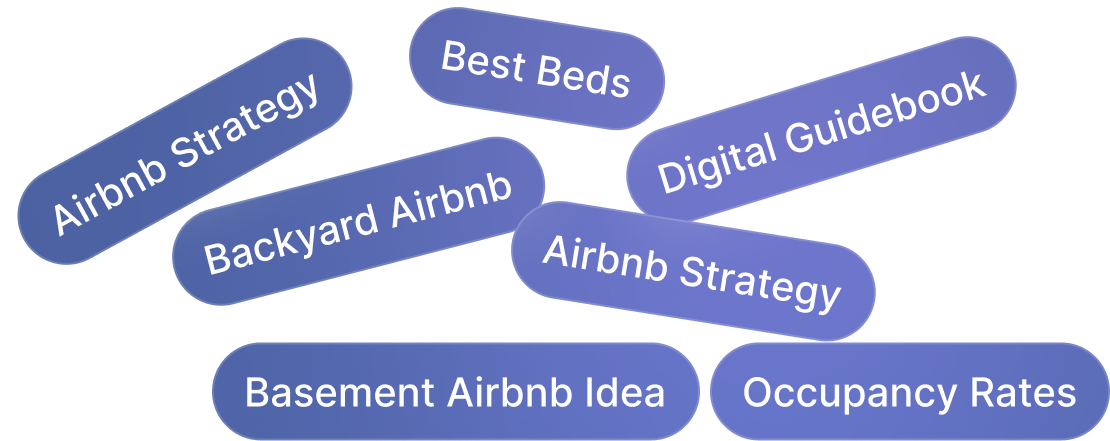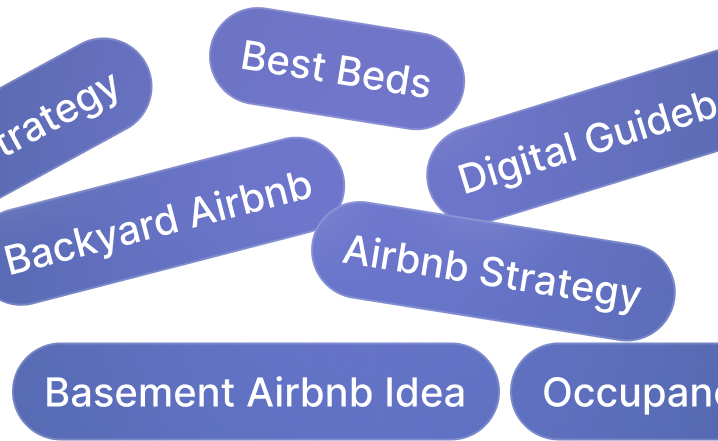Running a successful short-term rental can feel like running a mini business, especially when it comes to managing finances. One of the most important tools in every host’s toolkit is the chart of accounts for Airbnb. If you’ve never heard of it, don’t worry! This guide is here to walk you through what a chart of accounts is, why it matters for hosts, and how to set it up effectively. By the end of this post, you’ll have a system that keeps your books organized and gives you a clear picture of how your rental properties are performing financially.
Host Tools provides an automated, unified calendar for short-term rental hosts, allowing you to seamlessly list on all major channels. Start your free trial today!
What Is a Chart of Accounts for Airbnb?

A chart of accounts (COA) is essentially a list that organizes your financial transactions into categories. These categories help you track income and expenses systematically, making it easier to monitor the financial health of your business.
Think of it as a filing system for your finances. It’s categorized into major groups such as:
- Assets (e.g., cash, property, security deposits)
- Liabilities (e.g., loans, taxes, deposits owed to guests)
- Income (e.g., rental income, cleaning fees, late cancellation fees)
- Expenses (e.g., maintenance, repairs, cleaning, software subscriptions)
Your COA enables you to quickly find and analyze your financial data, simplifying everything from day-to-day management to tax filing and financial planning.
Why Is a Chart of Accounts Important for Airbnb Hosts?
Whether you manage one property or several, a well-organized COA is the backbone of your financial records. Here’s why every host should use one:
1. Streamlines financial management
Operating a vacation rental involves many transactions, from guest payments to maintenance costs. Without an organized COA, it’s easy to lose track of where your money is going or how much you’re earning. With a COA in place, you can easily log and monitor financial transactions, ensuring nothing slips through the cracks.
2. Simplifies tax season
Come tax season, a COA ensures you’re prepared. It minimizes headaches by keeping income and expenses categorized according to tax requirements. Plus, it helps you identify deductible expenses and comply with local tax laws.
3. Improves financial insights
Understanding how your Airbnb business is performing is crucial for growth. With a COA, you can generate detailed reports that help you analyze:
- Which property generates the most income
- Your seasonal revenue trends
- Areas where you may be overspending
These insights empower you to make informed decisions that can increase profitability.
4. Enables scalability
Whether you’re expanding your portfolio or simply growing your operations, having a COA lays the groundwork for scalable financial management. It’s particularly helpful if you’re using tools like Host Tools, which automate messaging, pricing, and calendar syncing across multiple rental properties.
How to Set Up a Chart of Accounts for Your Airbnb
Creating a COA might sound overwhelming, but once you break it down into steps, it’s surprisingly simple. Follow the six steps below to get started.
1. Identify your income sources
Start by categorizing the money you earn. Common income categories for Airbnb hosts include:
- Rental Income (earnings from guests)
- Cleaning Fees
- Cancellations or Late Fees
- Pet Fees (if applicable)
- Service Fees (revenue from additional services such as airport picks or private tours)
Tip: Keep these income sources separate so you can see the breakdown clearly when reviewing your profits.
2. List your expenses
Next, create categories for your expenses. These will likely include:
- Repairs and Maintenance (e.g., plumbing, electrical work)
- Cleaning Services
- Property Management Software Subscriptions (like Host Tools)
- Utilities (water, electricity, internet)
- Marketing (social media ads, professional photos)
- Insurance and Taxes (property tax, occupancy tax)
- Property management fees or host fees
- Any guest service fees
Pro Tip: Separate fixed and variable expenses. Fixed expenses (e.g., mortgage payments) remain consistent, whereas variable ones (e.g., repairs) might fluctuate.
3. Organize your assets and liabilities
- Assets might include the value of the property or cash reserves.
- Liabilities include things like mortgage balances, loans, or security deposits owed to guests.
This organization helps you see what your business owns versus what it owes.
4. Use accounting software or tools
Manually handling your COA is possible, but it can get tedious as your business grows. Airbnb hosts can save time by automating financial tracking with accounting software like QuickBooks. Tools like these sync transactions directly to your COA, reducing errors and saving hours of manual entry.
5. Maintain your chart of accounts regularly
Creating a COA is just the first step. Maintaining it is just as important. Dedicate time each week to review your entries, reconcile accounts, and ensure everything is up-to-date.
6. Consult a professional
Tax laws and accounting principles can get complicated. Working with a CPA or financial advisor familiar with vacation rentals ensures your COA follows best practices and adheres to local regulations. Plus, they can help you maximize deductions you might not have thought of!
Tips for Success with Your Chart of Accounts
To make the most of your COA, keep the following tips in mind:
- Be Consistent: Use the same categories consistently across all your financial reports to avoid confusion.
- Stay Organized: Keep receipts and invoices; they’ll be handy for cross-checking expenses.
- Automate Where Possible: Using platforms like Host Tools or expense-tracking apps ensures your COA is accurate and up-to-date at all times.
- Monitor Performance Monthly: Regularly review your financial documents to identify trends and opportunities. For instance, is one property underperforming? Are cleaning costs higher than expected at some of your Airbnb listings?
Final Thoughts
Managing the financial side of an Airbnb doesn’t have to feel overwhelming. A chart of accounts simplifies everything—from tracking expenses to preparing taxes to analyzing profitability. Whether you have one property or 100+, it’s an essential tool for building a thriving vacation rental business. By setting up your COA and leveraging automation services, you’ll not just save time but also gain the insights you need to stay ahead in an increasingly competitive market.
Host Tools provides an automated, unified calendar for short-term rental hosts, allowing you to seamlessly list on all major channels. Start your free trial today!



